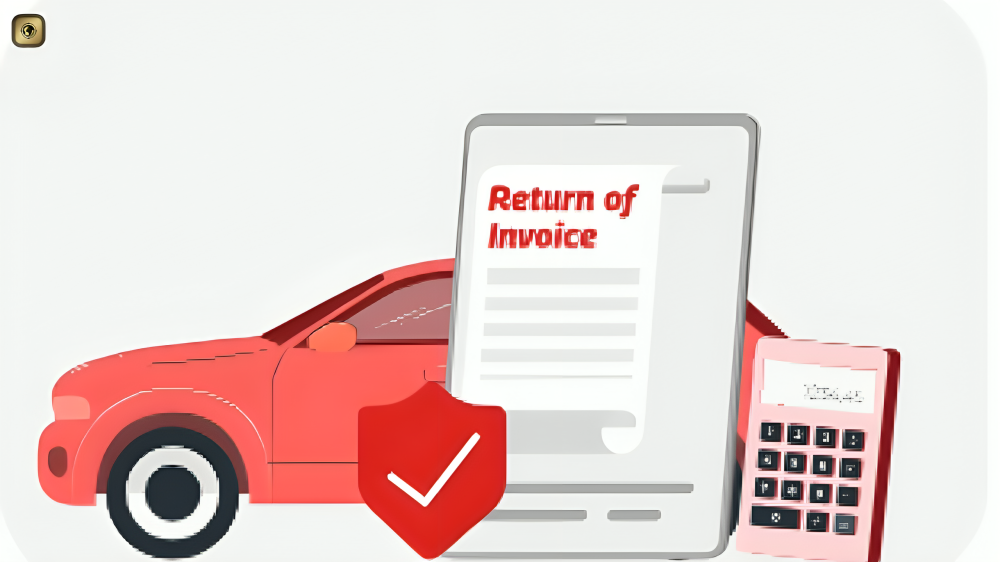March 26, 2025
- Securing your vehicle with an insurance policy safeguards you against financial losses that can result from third-party liabilities or damages to your vehicle. While the Indian government requires all vehicle owners to purchase third-party insurance, a comprehensive cover option is a superior choice. Although comprehensive insurance plans provide greater protection to your vehicle from unexpected damages, they exclude coverage for vehicle depreciation and ownership costs. However, you can gain this coverage by paying an extra premium or selecting add-on riders. Two of the most prevalent types of riders that offer additional protection to your vehicle are zero depreciation cover and return to invoice cover. Let us examine the differences between zero depreciation and return to invoice covers.
What is Zero Depreciation Cover?
- With regular use, the value of your vehicle diminishes over time. The depreciation of the vehicle’s value is mainly due to the wear and tear of its components. As the market value of the vehicle declines, so does the cost of the claims made against it. In the event your vehicle is damaged in an accident, the insurance company will cover the repair expenses after subtracting the depreciation of the parts that have been fixed or replaced.
- However, you can guarantee adequate coverage against claims by choosing the zero-depreciation add-on rider. If you possess the Zero Depreciation car insurance add-on, you become eligible to claim the depreciation value, which reduces your out-of-pocket costs. This add-on can be purchased for up to 5 years from the date of buying the vehicle. Furthermore, insurers usually impose a limit on the number of zero depreciation and basic insurance claims you can file within a year. Keep in mind that under a Zero Depreciation cover, the insurer might deduct some obligatory and voluntary deductibles.
What is Return to Invoice?
- In the case of a comprehensive insurance plan, the premium set by insurers is primarily based on the estimated market value of the vehicle. This value is referred to as the Insured Declared Value (IDV). During incidents where your vehicle is damaged beyond repair or if it is stolen, the insurer will compensate you with the estimated market value of your vehicle at that time. The insurer accounts for necessary deductibles and depreciation of the vehicle while processing the payment for such claims.
- However, with the Return to Invoice add-on, your insurer will reimburse you for the purchase or invoice value of the bike, which includes registration fees and road tax. This add-on is applicable only if the repair costs exceed 75% of the IDV and the vehicle is under three years old. You should ideally choose the RTI in car insurance add-on if you reside in a high-accident area. Nonetheless, the RTI add-on is generally costly and may significantly increase your premium amount.
Difference Between Zero Depreciation and Return to Invoice?
- There are three key differences between zero depreciation and return to invoice covers.
- A Zero Depreciation car insurance add-on protects against the depreciation of the parts of your vehicle that are being repaired or replaced. A Return to Invoice add-on safeguards the purchase or invoice amount of the vehicle in the event it is stolen or irreparably damaged.
- Zero Depreciation covers help to bridge the difference between the expense of the parts requiring repair or replacement and their depreciated worth. Return to Invoice covers help to bridge the difference between the buying price and the IDV.
- You can obtain zero depreciation coverage for a maximum of 5 years from the date you acquire your vehicle, whereas the RTI add-on is only available for three years from the acquisition date of the vehicle.
Final Note: Insurance add-ons are an excellent method to enhance your insurance policies since they provide coverage for losses not included in the primary plan. Depending on your location and the type of coverage you require, you should select appropriate add-ons that allow you to gain maximum advantage.
Disclaimer: For further information regarding risk factors, terms, and conditions, please examine the sales brochure thoroughly before finalizing a purchase. *The discount amount will change based on vehicle specifications and the registration location.



Leave A Comment